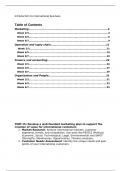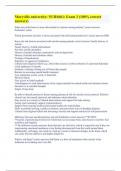Summary
Samenvatting - Introduction to international business
- Course
- Institution
TWM 15: Develop a well-founded marketing plan to support the creation of value for international customers 1. Market Research: Analyze international markets, customer segments, trends, and competition. Use tools like PESTLE (Political, Economic, Social, Technological, Legal, Environmental) and SWO...
[Show more]












